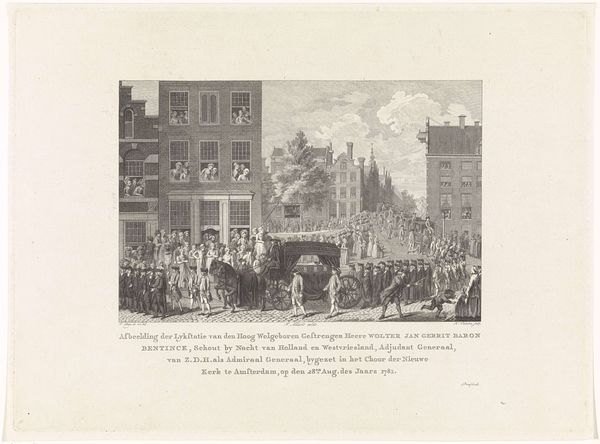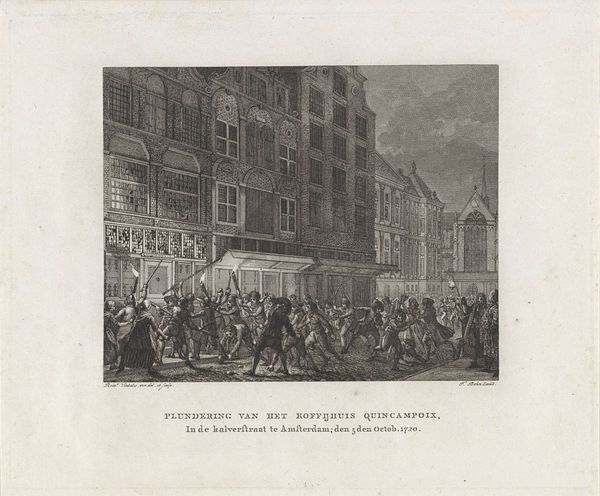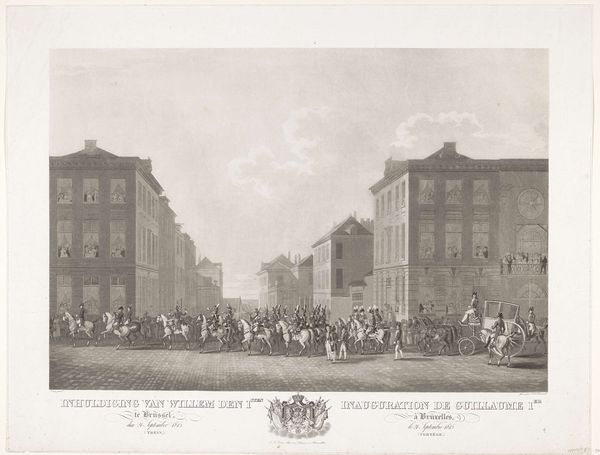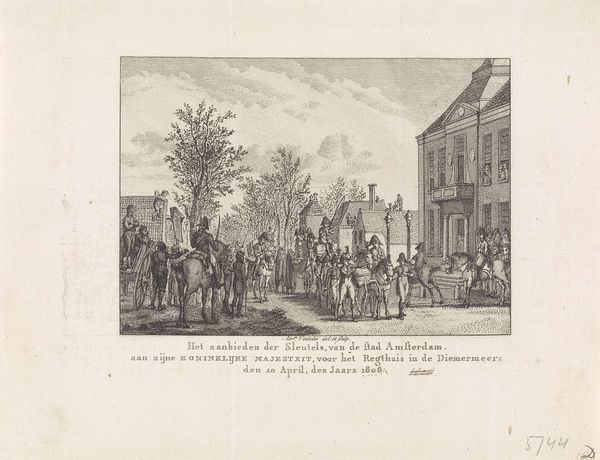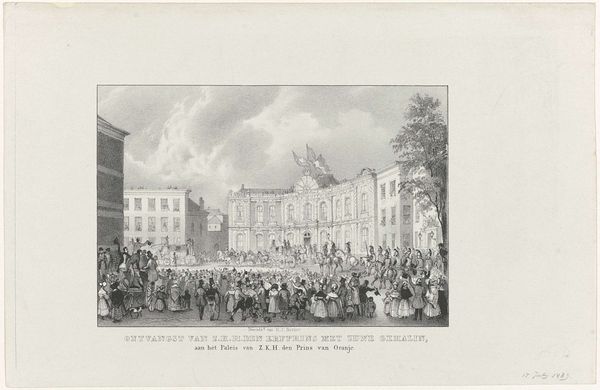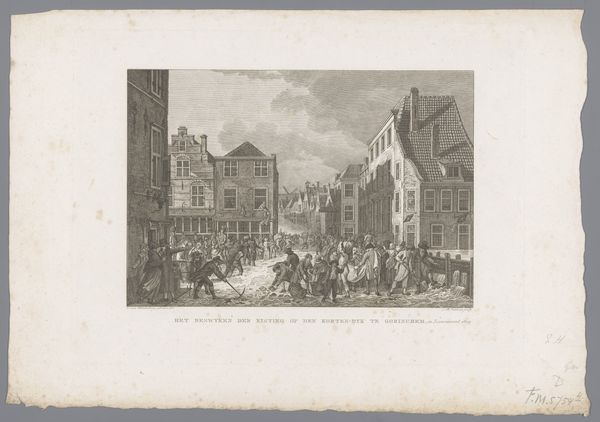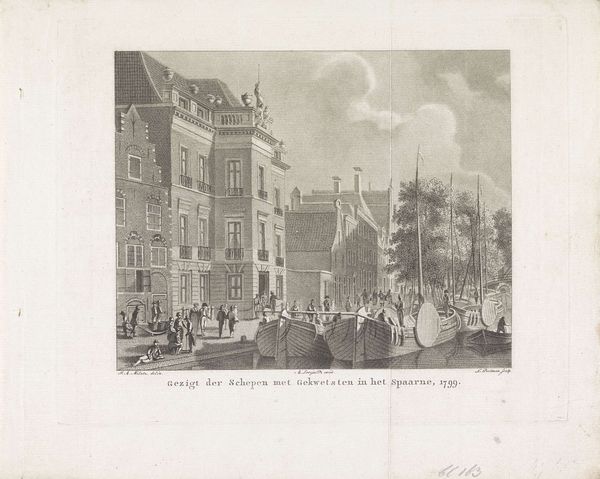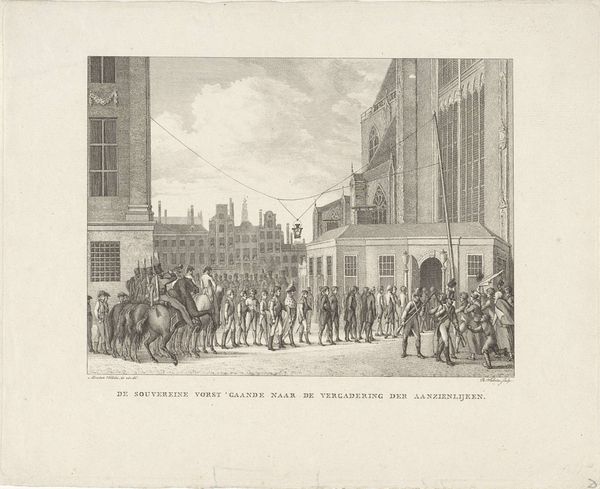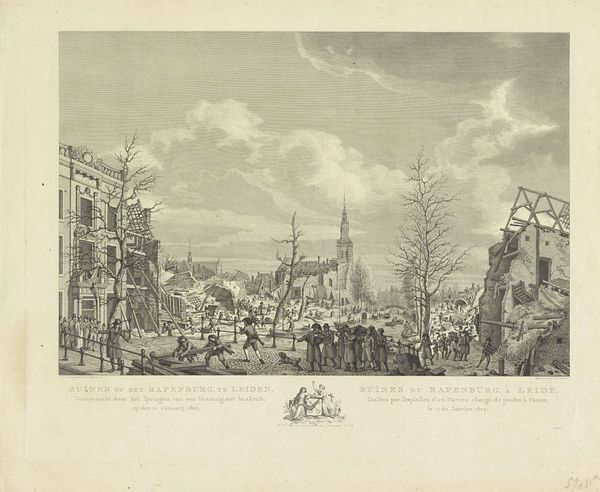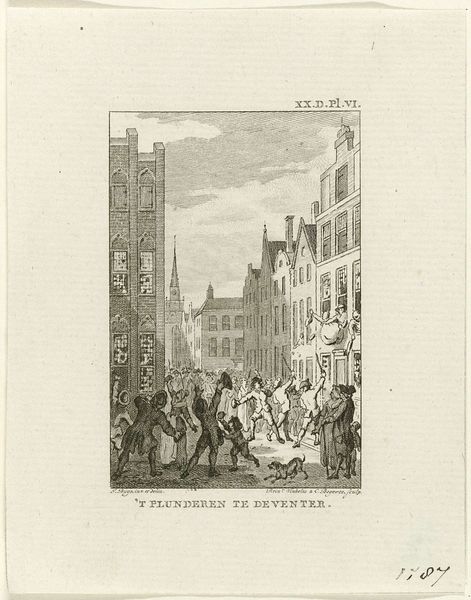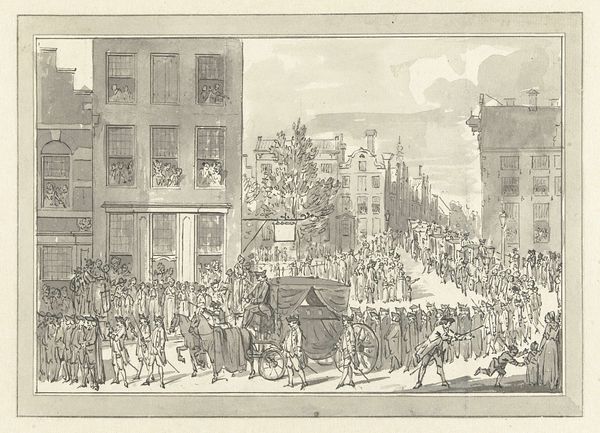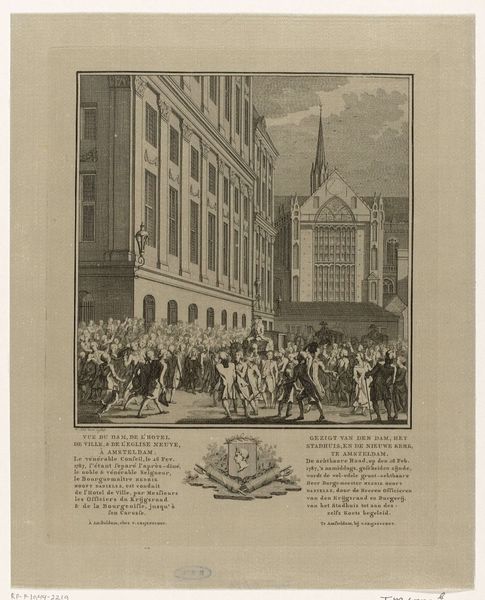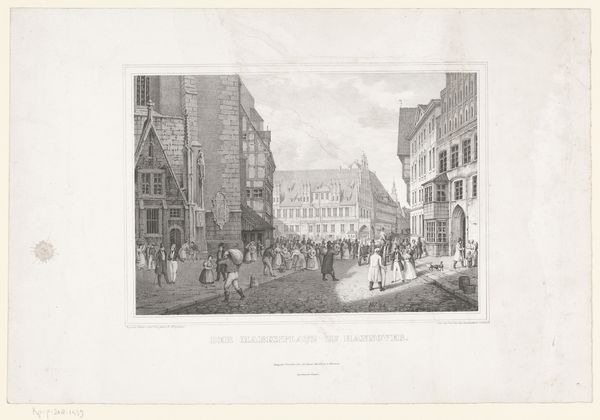
print, engraving
#
neoclacissism
#
dutch-golden-age
# print
#
cityscape
#
engraving
Dimensions: height 175 mm, width 255 mm
Copyright: Rijks Museum: Open Domain
Editor: So, this is "The Arrival of Prince Willem Frederik in Amsterdam, 1813," an engraving by Theodoor Koning. It seems so meticulously detailed, almost like a photograph despite being made so long ago. What elements stand out to you in its composition? Curator: The organizational clarity is paramount. Notice how the architectural forms establish a rigid grid, against which the organic movement of the crowd is set. This tension contributes a sophisticated play. We must also account for the value shifts of line, the artist uses a fine mesh to produce both strong and subtly graded tonalities. Editor: The artist uses the structure of the architecture as a framework, that’s interesting. Curator: Exactly! Do you observe how the bridge, canal, buildings, trees, and figures establish layers, defining spatial recession? It provides depth without resorting to atmospheric perspective. These shapes, almost architectural, offer structural coherence, further reinforcing this reading. It produces rhythm that would have pleased Mondrian! Editor: So, it’s all about the relationship of line and shape, creating layers and depth, and forming an interesting tension... What would you say the function of Neoclassicism is within Koning's organizational structure? Curator: It dictates a restraint that ensures legibility and hierarchical order; it informs every choice the artist makes. Though ostensibly this piece documents a historic occasion, ultimately it manifests the organizational underpinnings of classicism through geometry and carefully arranged patterns of light. It represents a structured gaze onto Dutch society itself. Editor: So, seeing it as this careful study in shape, line and tonality lets us see the era differently. Thanks! Curator: Indeed, approaching art from this viewpoint sharpens one’s understanding of its visual structure and how it reflects artistic choices.
Comments
No comments
Be the first to comment and join the conversation on the ultimate creative platform.
